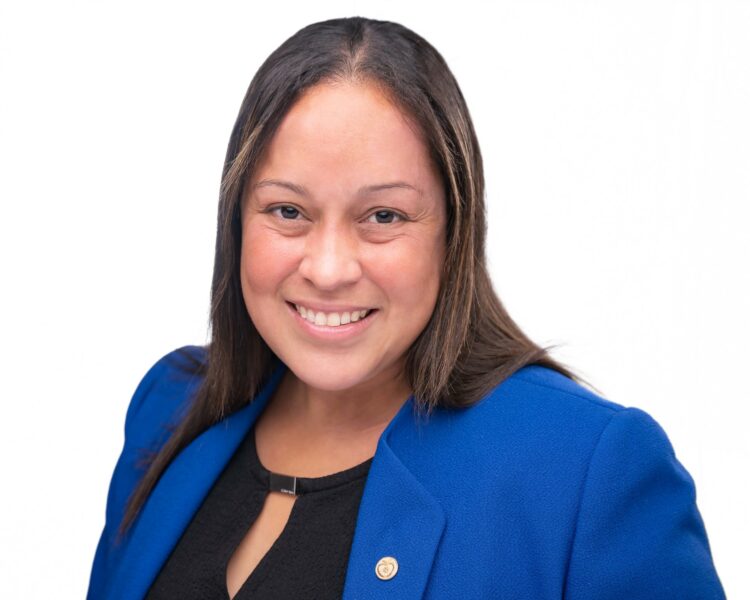
Thursday, January 20, 2022 at 10:46 AM

Thursday, January 20, 2022 at 10:46 AM
When the pandemic hit, we started giving money to people who needed it — and it helped. Our efforts have worked so well, in fact, that the District of Columbia is building on our model and plans to launch a $1.5 million pilot program for cash transfers.
We knew that our neighbors were the experts in their own lives and that they would know best how to utilize financial resources to support their families. And our instincts were right.
Our nonprofit, Martha’s Table, has supported strong children, strong families and strong communities in D.C. for more than 40 years. We operate nationally accredited education centers, pair healthy food access with physical and emotional wellness programs, and invest in family success. For the past 20 months, we have run some of the country’s largest privately funded cash-transfer programs.
In the spring of 2020, just a month after the D.C. Department of Health confirmed the first case of covid-19, 60 percent of families with children enrolled in our programs had lost their source of income. This mirrored trends across the country: In-person occupations, disproportionately staffed by Black and brown workers, were hit the hardest, exacerbating inequities.
The world was not equipped to respond to the covid-19 pandemic, and pressures mounted on the nonprofit sector to carry the weight.
Like others, our team did its best to flatten the curve and adhere to the ever-changing public health guidance. In March 2020, we transitioned our early education programs to a virtual environment. Recognizing that many parents would be forced to choose between caring for their children and reporting to work, we launched our first cash transfer program. Using monthly payments, with no strings attached, we put $9,000 each into the hands of 137 families. We supplemented this with a four-month supply of diapers, wipes, formula and grocery store gift cards.
These concrete resources, deployed quickly and directly to parents, made a tangible impact. Ninety-nine percent of enrolled families reported that the cash helped them remain financially stable. Ninety-four percent said they spent the money on rent and utilities. Eighty-seven percent spent it on food. One family used the funds for car repairs, without which commuting to work — and earning a paycheck — would have been impossible.
But months after the Cares Act became law and stimulus payments went out to millions of Americans, many residents in Southeast D.C. still lacked financial support. Those living beneath the poverty line were the least likely to receive economic assistance, as they had not been required to file the tax returns on which the payments were based.
This urgent need led us, in the summer of 2020, to launch THRIVE East of the River, a partnership among Martha’s Table, 11th Street Bridge Park, Bread for the City and the Far Southeast Family Strengthening Collaborative. Together, we equipped 536 families living east of the Anacostia River with $5,500 each over five months, as well as weekly access to healthy food and household items, and assistance navigating public and private resources.
Our initiative is being reviewed by the Urban Institute, but the benefits of cash assistance have already been proved time and time again. It provides families the flexibility to address their unique circumstances. It promotes equity. And it works quickly, delivering immediate help through checks, prepaid debit cards or even mobile transfers.
But what stands out most to us at Martha’s Table is that there is dignity in dollars.
Too often, families in need are forced to navigate a confusing network of service providers to access resources. One neighbor asked, “Why does it take me having a nervous breakdown to get resources?” When they sought help, this person said, “There were so many different places, and people kept sending me everywhere.”
We have consistently heard that our cash assistance programs reduced stress in households. In addition to short-term relief, this can produce long-term benefits by preventing adverse childhood experiences that contribute to poor health outcomes in adulthood.
Learning from our experiences during the pandemic, Martha’s Table has committed to scaling up our cash assistance programs over the next five years. These programs aim to help stabilize families when they need it most, whether that is during a broader economic downturn, when faced with the heavy costs of a newborn or when entering retirement. We also plan to use cash assistance to foster economic mobility through child savings accounts. Research shows that having as little as $499 in savings as a child is associated with being three times as likely to attend college and four times as likely to graduate.
Our programs’ proven success led the mayor’s office to include $1.5 million in the District’s fiscal 2022 budget to support a guaranteed income pilot. With this, D.C. joins a growing list of cities taking the lead on direct cash assistance.
There is dignity in dollars. And direct cash assistance cannot only help families get by but set them on a path to thrive.
Kim R. Ford is the former president and chief executive officer of Martha’s Table
 News
NewsMarch 8, 2024 at 9:23 AM
“Without women in this world, nothing is possible…nothing.” -Angela Draughn
 Connected
Connected
0 New comments